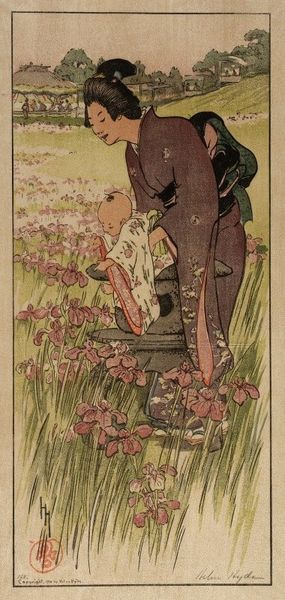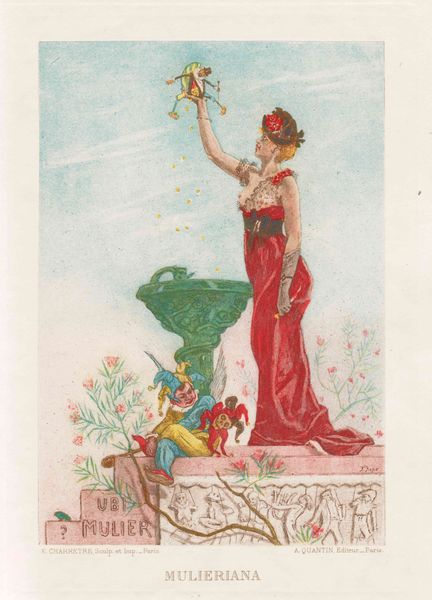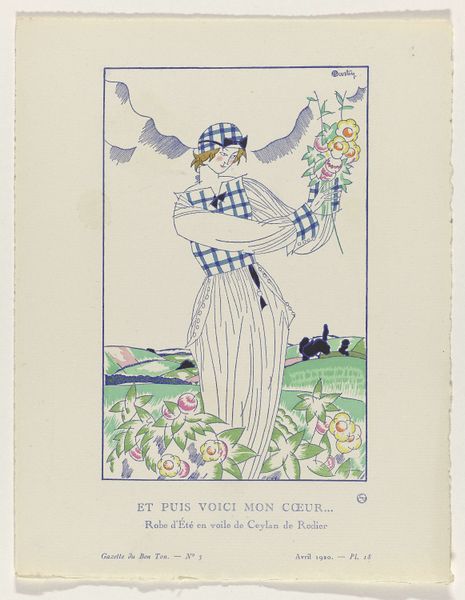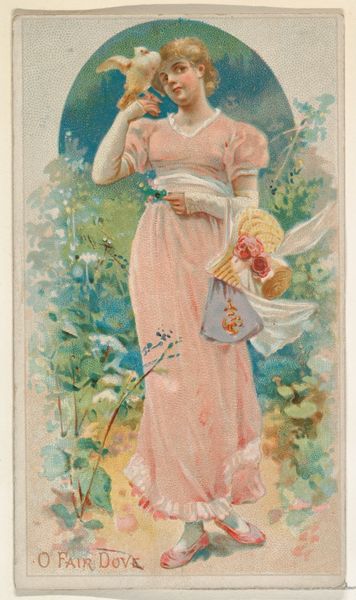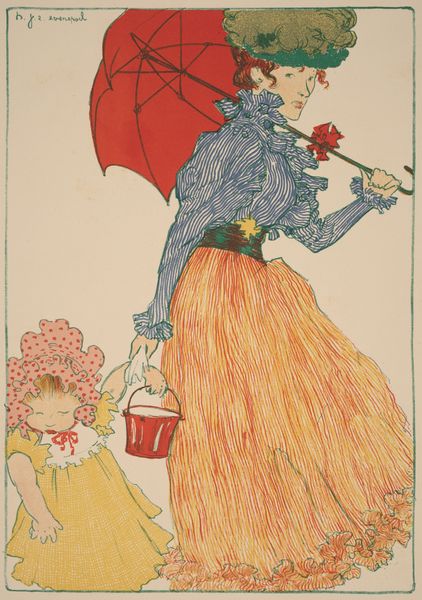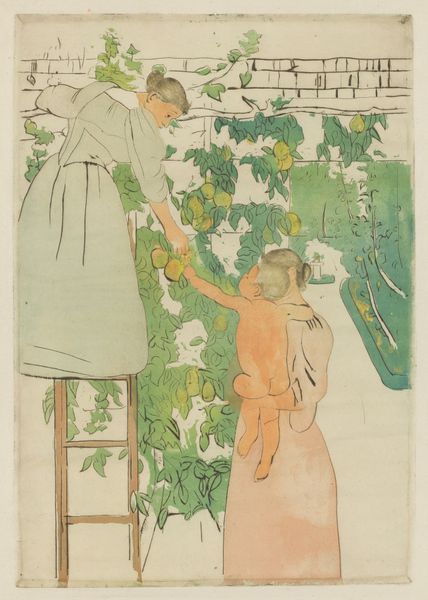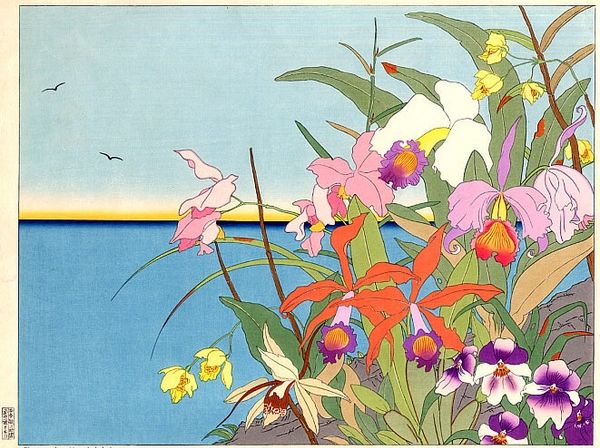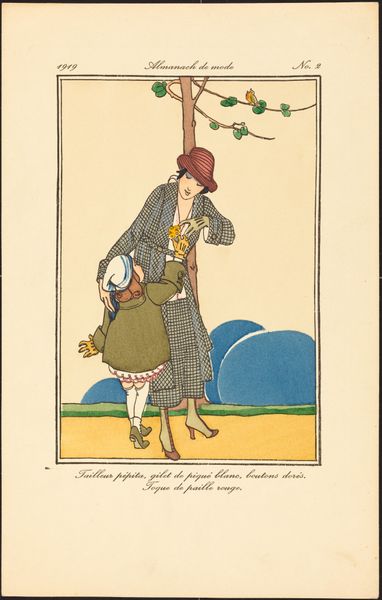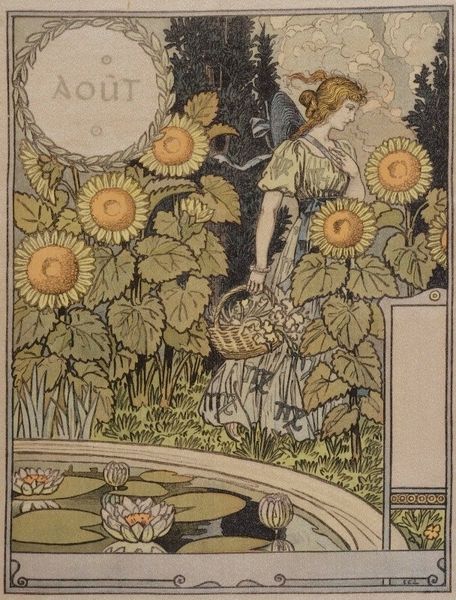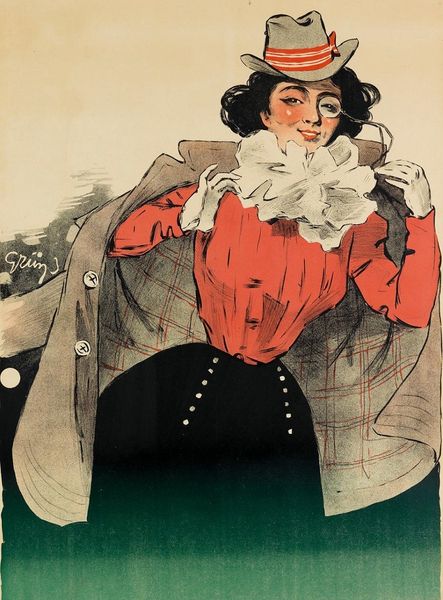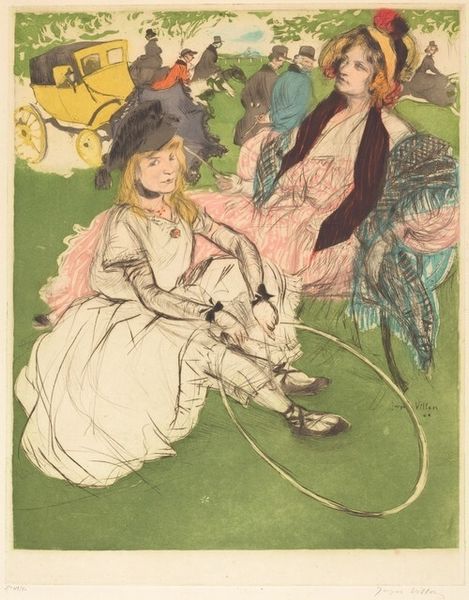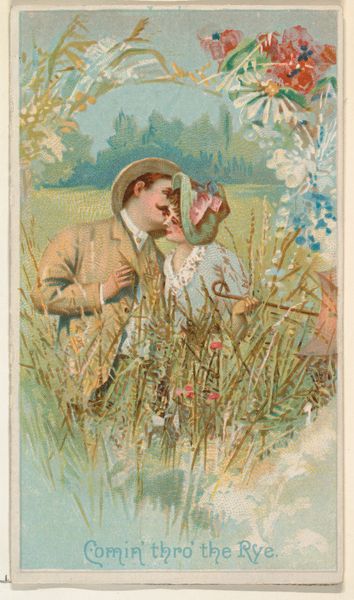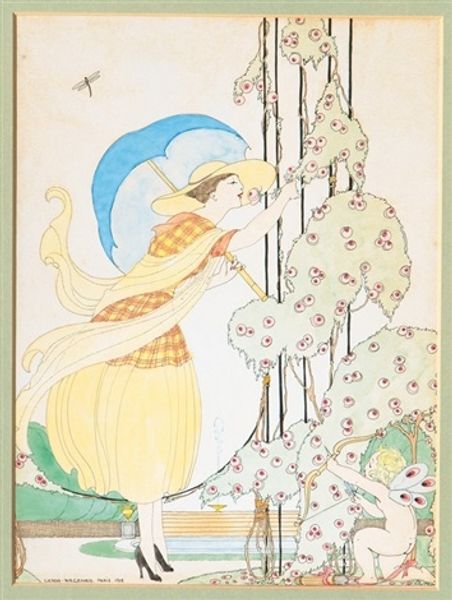
painting, watercolor
#
art-nouveau
#
water colours
#
narrative-art
#
painting
#
landscape
#
figuration
#
watercolor
#
coloured pencil
#
art nouveau
#
genre-painting
#
watercolor
Copyright: Public Domain: Artvee
Editor: Here we have Jessie Willcox Smith's "Mary, Mary, quite contrary, how does your garden grow," from 1918. It’s a watercolor, and it feels like a glimpse into a childhood daydream, but it's also a bit unsettling. I'm not quite sure why. What do you see in this piece? Curator: Well, on the surface, it seems to represent a simple nursery rhyme. But let’s consider the visual symbols. The little girl, face obscured by a large hat, waters a garden of strangely humanized tulips. Notice how they mimic a chorus line. Is she nurturing, or perhaps controlling? Editor: Controlling? I hadn't considered that. I was more focused on the surreal, almost dreamlike quality. The tulips do look a bit like children in ruffled dresses. Curator: Precisely. And the rhyme itself has darker interpretations – some theories even link “Mary” to Mary Queen of Scots. Consider the era. It was painted during the First World War, and gardens have historically symbolized both life and refuge, but also potential loss and longing during times of conflict. Does the girl perhaps stand as a figure representing lost innocence? Editor: So, the image becomes less about a simple garden and more about broader societal anxieties? The nursery rhyme is not as innocent as it seems. Curator: Exactly! Smith uses familiar imagery and inserts a layer of complexity, prompting viewers to examine not just the idyllic surface, but the cultural undercurrents it suggests. Look also at the white fence in the background – a typical marker of domestic bliss, yet also hinting at boundaries, confinement. Editor: That definitely reframes the artwork for me. It's more than a children's illustration; it's a commentary. Curator: Indeed. It shows how a seemingly straightforward image can become imbued with powerful symbolic meaning when we look deeper into its context and visual vocabulary. Editor: It’s amazing how much depth can be found in what I initially perceived as just a whimsical illustration.
Comments
No comments
Be the first to comment and join the conversation on the ultimate creative platform.
